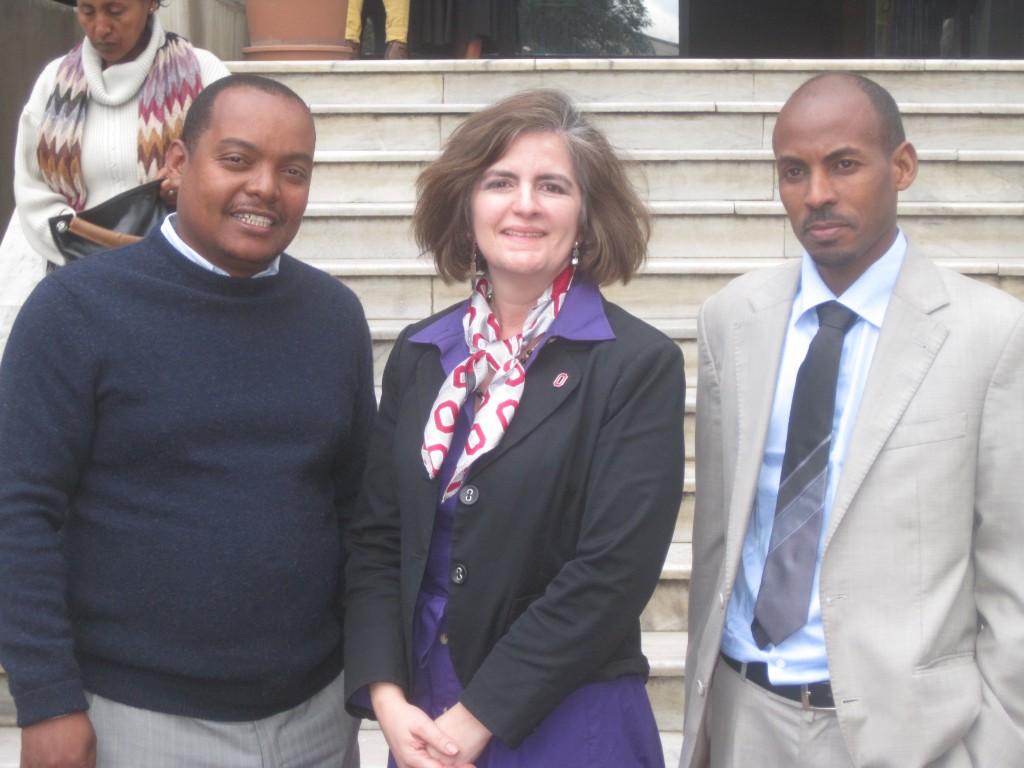I may wade into some controversy with this post. Fair warning.
I think it’s OK that communications is a field dominated by women.
That ends the part that is OK.
It is not OK that the men are over-represented in the top positions, though it’s not too big of a gap. And it is really not OK that women in the field earn less, on average, than men.
My organization, as a whole, employs 300-plus communicators in various units. I have enjoyed collaborating with many of my communications colleagues across different areas in the same organization. It is obvious that the great majority of communicators in my organization are women. National statistics support my experience as the norm.
Let’s look at some numbers from the U.S. Bureau of Labor Statistics (BLS) released in 2013.
This first chart shows the proportion of workers in communications-related occupations who are women. They are our field’s worker bees. Anywhere from 57 to 65 percent of people in these roles are women.

Figure 1 doesn’t concern me too much. The gaps aren’t huge, though it would be nice to have more diversity in our field.
Now Figure 2 shows managers and leaders in our field. The titles in the manager occupation category do not precisely align with the titles in the professional occupation category. I did my best to focus on communications-related titles. The proportion of managers who are women is slightly less than the overall proportion of women in communications fields.

This is slightly disturbing, but I expect that management gap to close. In addition, our field has more women managers than the combined category of management occupations, which BLS says is 38 percent women. Does that make it right? No, but I do believe the trends are in our favor on this.
What disturbs me more is the pay gap. Women communications workers and women communications managers get paid less than their male counterparts.
Table 1 shows the BLS salary data for women communications workers. It’s a little complicated, so I follow up with a simpler bar graph. Note that the BLS does not show salary data if the number of employees in that category is less than 50,000.
TABLE 1
| Occupation |
Number of all workers
(in thousands) |
Median weekly earnings,
all workers |
Number of all women
(in thousands) |
Median weekly earnings,
women |
Number of all men
(in thousands) |
Median weekly earnings,
men |
Women’s earnings
as percentage
of men’s |
Market research analysts
and marketing specialists |
167 |
$1157 |
101 |
$1,029 |
66 |
$1,446 |
71.2 |
Public relations
specialists |
123 |
$954 |
75 |
$887 |
49 |
(1 ) |
(2 ) |
| Technical writers |
46 |
(1 ) |
26 |
(1 ) |
20 |
(1 ) |
(2 ) |
| Writers and authors |
85 |
$918 |
43 |
(1 ) |
42 |
(1 ) |
(2 ) |
Miscellaneous media
and communication
workers |
47 |
(1 ) |
32 |
(1 ) |
15 |
(1 ) |
(2 ) |
1 Data not shown where the employment base is less than 50,000.
2 Data not shown where the employment base for either the numerator or denominator is less than 50,000.
Marketing specialists who are women get paid, on average, only 71.2 percent of the salaries of marketing specialists who are men, for a gap of nearly 29 percent.
For PR specialists, the number of men employed in that category is less than 50,000, so BLS doesn’t calculate their median weekly earnings or the pay differential. But you can see that the median weekly earnings for all PR specialists is $954, while for women PR specialists it’s $887. Doing some quick math, that means women PR specialists make 85.5 percent of what men PR specialists earn.
Figure 3 is a bar graph showing the two occupations from Table 1 for which we have or can deduce the information on median weekly earnings. The other worker categories do not have enough people employed in those occupations to merit reporting by the BLS.

Now let’s look at how the women managers compare to their male counterparts in earnings.
TABLE 2
| Occupation |
Number of all workers
(in thousands) |
Median weekly earnings,
all workers |
Number of all women
(in thousands) |
Median weekly earnings,
women |
Number of all men
(in thousands) |
Median weekly earnings,
men |
Women’s earnings
as percentage
of men’s |
Advertising and
promotions
managers |
68 |
$1,164 |
40 |
(1 ) |
28 |
(1 ) |
(2 ) |
Marketing and
sales managers |
891 |
$1,408 |
392 |
$1.127 |
499 |
$1,660 |
67.9 |
Public relations
and fundraising
managers |
62 |
$1,475 |
29 |
(1 ) |
33 |
(1 ) |
(2 ) |
| Editors |
132 |
$902 |
74 |
$892 |
58 |
$933 |
95.6 |
1 Data not shown where the employment base is less than 50,000.
2 Data not shown where the employment base for either the numerator or denominator is less than 50,000.
Again, lots of data missing here from BLS, but we can look at the marketing managers and the editors. Marketing managers who are women make only 67 cents for every dollar a male marketing manager earns. That grates.
At least the editors fare better. Women editors are paid 95 cents for every dollar a male editor makes. (I’ll write a future post on the top 20 occupations for women in the U.S.)
Sadly, not a surprise
Is this pay gap in communications fields completely surprising? No. The average woman in the U.S. in all occupations combined earns 82.2 cents for every dollar a man earns. (Source: same BLS report)
In 2011, a team of researchers from the Public Relations Society of America released a study showing that women in PR earned 78 cents on the dollar earned by men, for a gap of 22 cents. After adjusting for years of experience, the gap narrows to 14 cents, with women in PR earning 86 cents for every dollar a man in PR earns.
Why the gap?
Figuring out the reason for this pay gap is tricky.
The same researchers released a follow-up study in 2012. In addition to years of experience, the researchers adjusted for “manager role enactment, participation in management decision-making, income-suppressing career interruptions, and career specialization.” After adjusting for all that, there was still a gap of 11 percent.
What accounts for that 11 percent? The researchers conclude that gender discrimination explains the gap.
I don’t completely disagree, but I also suspect that as women, we ask for less.
The first time I asked a prospective employer for a salary that I believed I was worth, I greatly undervalued myself. That one decision impacted my earning potential and future retirement savings.
I know I’m not the only woman who has done this.
Why should we care?
Aside from the fairness aspect, this gender pay gap should matter to all communications professionals. Over time, this inequity could drive highly productive women to other fields.
The gender income gap also impacts families headed by women. Paying women less than men has a ripple effect across generations.
You’ve heard the saying, “If you wouldn’t do your job for free, then quit.” In other words, love your career as a vocation. I absolutely do. I work with people who make the world a better place.
And I believe this world will be even better when the gender pay gap closes.
With this post, I encourage my communications sisters to embrace negotiation, understand your true value, and influence business decisions that help narrow those gaps.
What thoughts do you have about the gender pay gap in communications?








